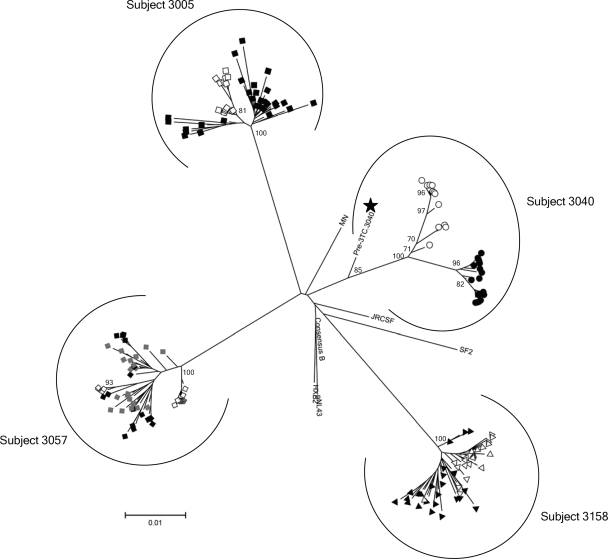FIG. 2.
Continued evolution of pol (and back mutation) as a major mechanism of MDR-184M variant emergence after RTI therapy interruption. This is an unrooted NJ phylogenetic tree generated with MEGA, version 3.1. Data were derived from a multiple sequence alignment including nonidentical clonal pol sequences from all subjects plus the laboratory and patient-derived HIV-1 reference sequences. We assumed a Tamura-Nei (TN93) model of nucleotide evolution including transitions and transversions and a gamma-distributed variability rate among sites with an alpha value of 0.8. The node reliability was assessed using 1,000 bootstrap replications. Bootstrap values of >70% are presented. Additional analyses using different models of nucleotide evolution, maximum-likelihood tree reconstruction approaches, separate alignments per each subject, or separate analyses of the PR and the RT coding regions of pol yielded identical results. In subjects 3005, 3057, and 3158, MDR-184M variants emerging after treatment interruption (black symbols, T1; gray symbols, T2) and baseline MDR-M184V viruses (T0, white symbols) did not have different MRCAs. In subject 3040, 184M viruses emerging after treatment interruption (black circles) derived from a significantly different MRCA than baseline M184V variants. However, a WT consensus sequence obtained before the initiation of 3TC (black star) treatment was more closely related to the baseline M184V MRCA (genetic distance ± standard error, 0.0162 ± 0.0038) than to the 184M MRCA (0.0336 ± 0.0057).

